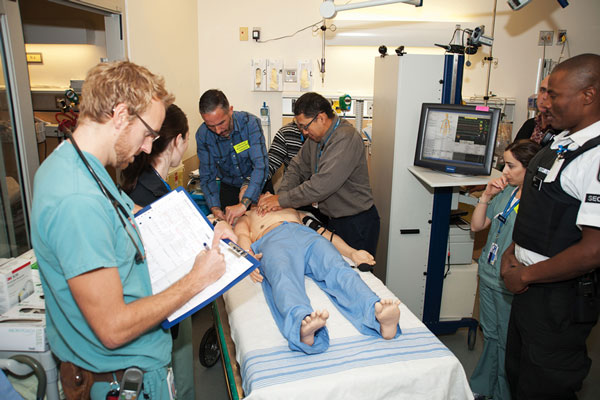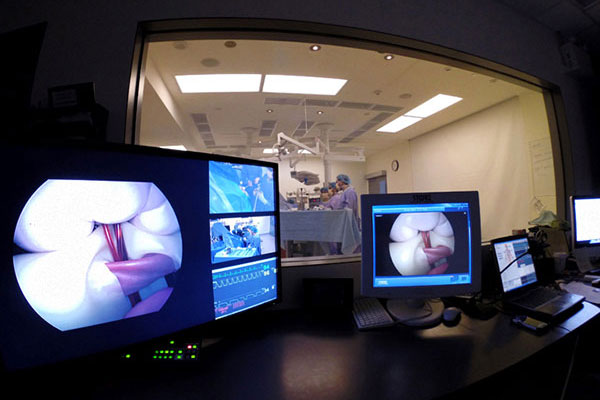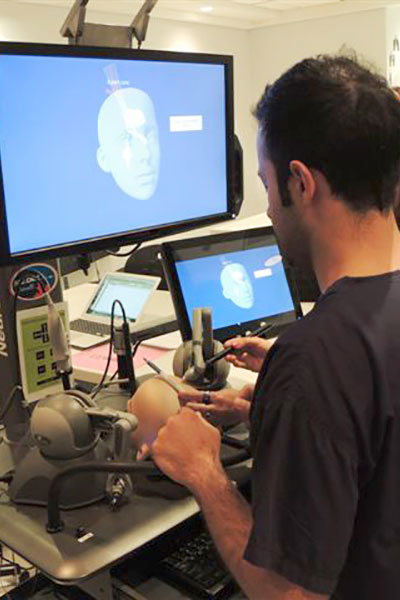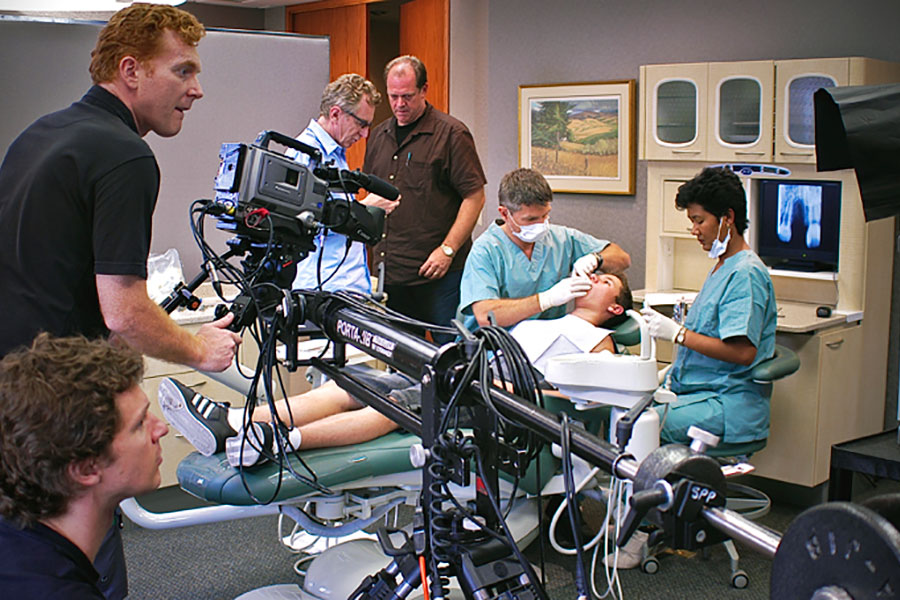Simulation-based education is contributing to a major paradigm shift in health professions education and continuing professional development (CPD).
An experiential form of learning that replicates real-world scenarios, SIM-based education is now widely used in Ontario’s medical and nursing schools. It is employed as an important quality improvement tool in the clinical setting, to better prepare clinicians and hospital staff for common procedures (e.g. Code White simulations). SIM-based education also prepares hospital staff for potential disaster scenarios, including the many recent Ebola simulations that have taken place across North America.

Interprofessional hospital code simulation in an emergency event
Photo credit: University of Toronto Surgical Skills Centre at Mount Sinai Hospital
Simulation is bigger and more diverse than you think
Simulation is an incredibly diverse learning tool when applied to health professions education and CPD. SIM-based education can encompass, for example, various levels of reality or “fidelity”—from low to high—as well as different modalities, including virtual reality, hybrid and e-blended learning, role-playing, task-specific, procedural simulations, and so on. Effective simulations can be performed with expensive state-of-the-art equipment, or with no equipment at all.
The health professions simulation equipment available on the market is comprehensive, by type, usage and sheer volume. An ongoing inventory being carried out by the SIM-one Provincial Equipment Coordination Service (SPECS) has so far counted more than 27,000 simulation equipment assets in the Province of Ontario alone. According to MarketsandMarkets, a market research company, the value of the global healthcare simulation market is expected to more than double between 2014 and 2019, from $863.5 million to nearly $2.1 billion.
Regardless of the fidelity, modality or type of equipment, the goal of SIM-based education is always the same: to improve the skills and practice of the health practitioner in a realistic—but safe—environment.

Simulation control room
Photo credit: Roger Chow, Allan Waters Family Simulation Centre, St. Michael’s Hospital
CPD U of T seeks to position itself as a leader in SIM-based CPD
Since his arrival in 2011, Vice Dean Dimitri Anastakis has worked to reorganize his portfolio so as to create infrastructure that will further facilitate the expansion of SIM-based courses. The Vice Dean is intent on seeing a shift from traditional “bums-in-seats” CPD to expanded use of simulation and eLearning in CPD.
“CPD U of T strongly advocates for the appropriate use of simulation in health professions CPD,” said Dr. Anastakis, who formerly served as the founding President of SIM-one—Ontario Simulation Network. “Along with eLearning and C-IPE (continuing interprofessional education), our portfolio will prominently feature SIM-based learning as one of three pillars that will transform the health professions CPD landscape.”
Since May 2013, CPD U of T has offered 22 simulation-enhanced courses with Royal College Maintenance of Certification Section 3 Simulation Activity credits. This figure will only grow.
Simulation is recognized as a powerful learning method

Resident training using the Neurotouch simulator
Photo credit: University of Toronto Surgical Skills Centre at Mount Sinai Hospital
The Government of Ontario recognizes the benefits of SIM-based learning and has invested heavily in building a formidable simulation infrastructure. These investments include:
- $20 million for clinical simulation equipment to Ontario’s nursing schools between 2004/5 and 2005/6
- More than $2.3 million for simulation equipment to support seniors living at home to Ontario’s publicly funded personal support worker programs
- The $60 million Medical Psychiatry Alliance. This project will fund a new simulation centre at the Centre of Addiction and Mental Health (CAMH) for professionals to learn and test new approaches to treating physical and mental illness
Canada’s largest healthcare simulation event
Nowhere is the full power of simulation more apparent than at SIM-one’s Ontario Simulation Exposition (SIM Expo). The SIM Expo is now Canada’s largest healthcare simulation event and a great venue to connect with leaders in health professions education and CPD.
“The SIM Expo’s success is a living testament to the increasing need for more simulation in health professions education and CPD,” said Dr. Anastakis. “The SIM Expo is relevant for all those involved in health professions CPD. CPD U of T is very proud to support the 2014 SIM Expo.”
The 2014 SIM Expo will feature more CPD-relevant topics than ever before. Participants will experience advanced simulation techniques and technologies, such as serious gaming, virtual reality, mobile technologies and interprofessional team simulations.
The 2014 SIM Expo will take place on December 4 and 5 in Toronto, Ontario. More can be learned at www.SIM-one.ca/events/simone-expo.
Be a part of the paradigm shift
The benefits of SIM-based health professions education and CPD are undeniable: simulation facilitates real-word preparation and training, resulting in better prepared health professionals.
Be part of something great. Join us at the 2014 SIM Expo.
